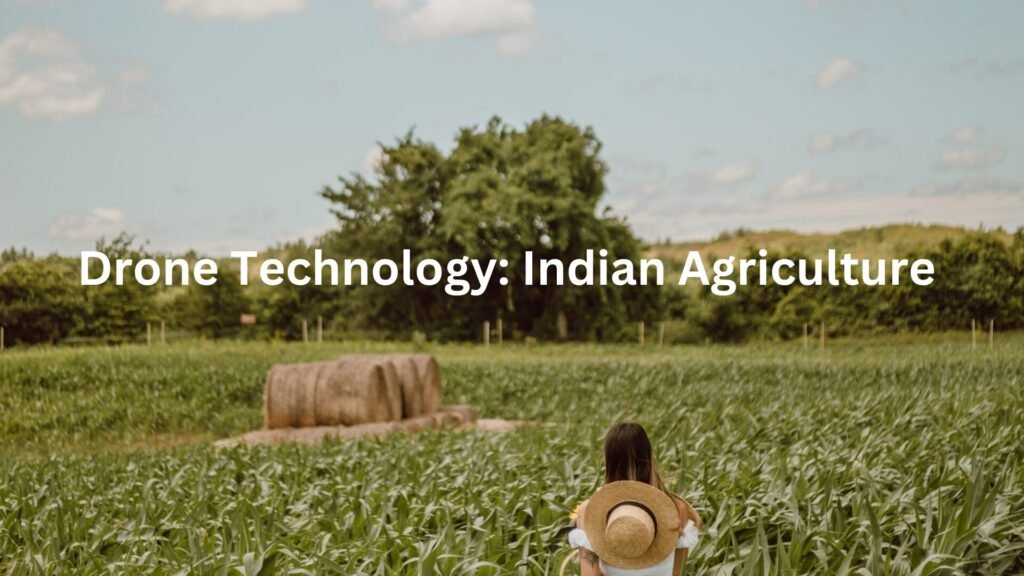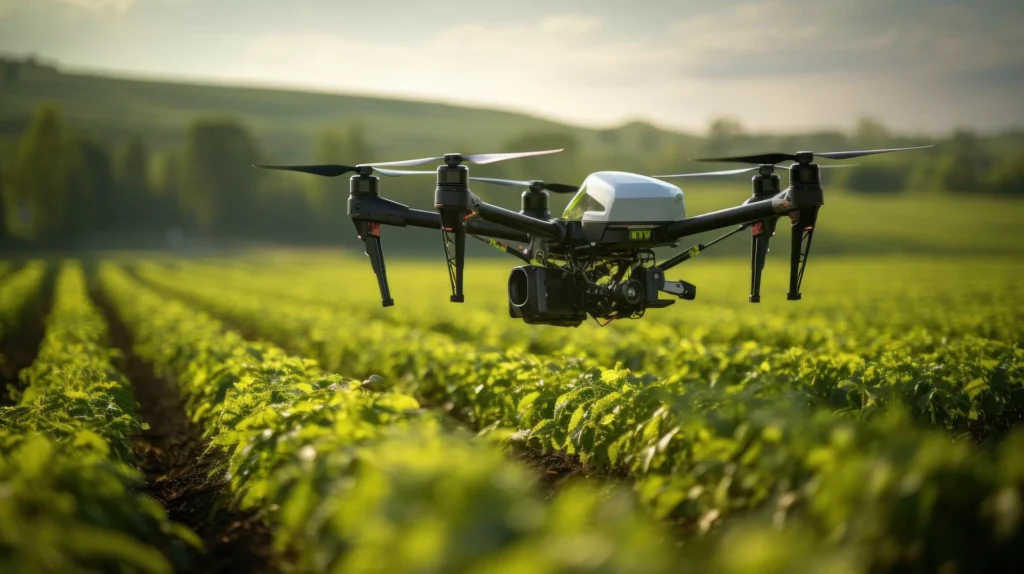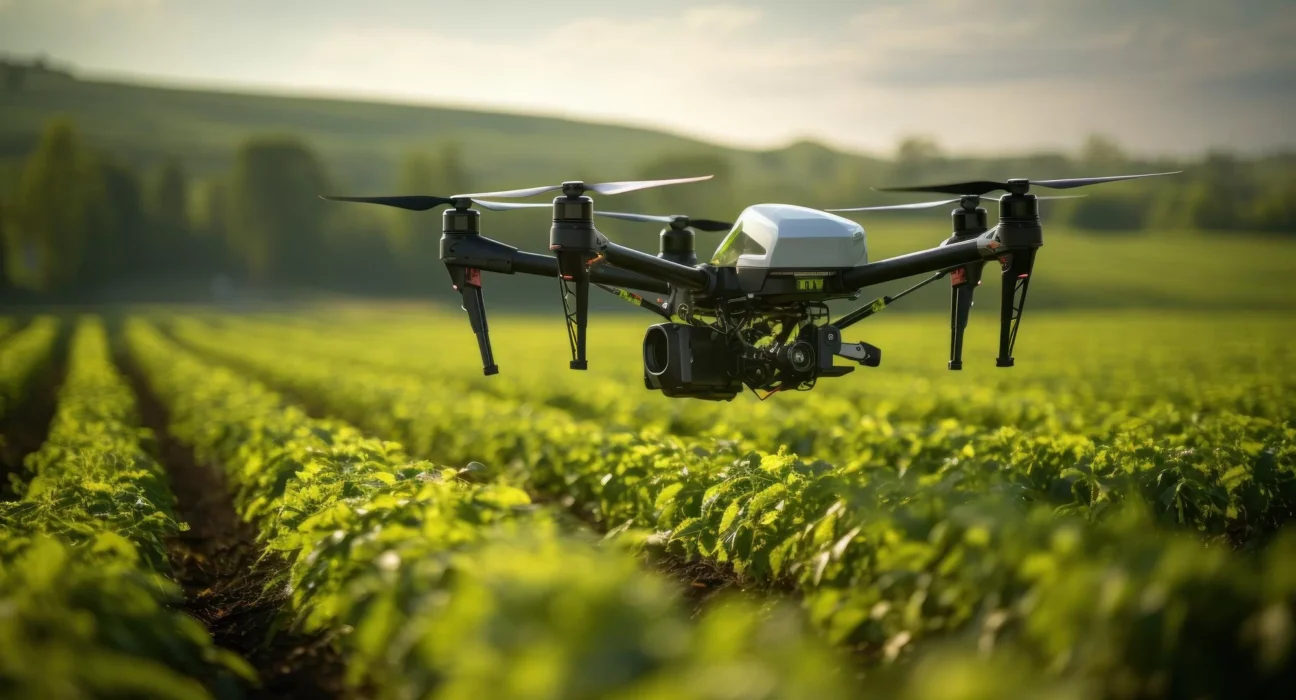Indian Agriculture
Agriculture in India is the leading employment sector and the provider of the largest livelihood in our country. It significantly contributes to our gross domestic product (GDP), which is over 16%. With the growing population and shortage of land for agricultural purposes, we the youth of India are responsible for tackling this concern and bringing in new technology that would help us increase production. New technology and other innovations in agriculture have significantly increased over the past few years, and we have seen more efficiency in farming operations. One such technology that did create a buzz was ‘Drone’. The Indian agriculture sector can be revolutionized by Drone Technology.

Rising And Existing Concerns Over The Agriculture Practices In India
Here are a few reasons:
- The production – The current population of India is 1,442,374,511. While 54.6% of the population is engaged in agriculture practice. The need to produce food for the growing population is a major concern to the Indian agriculture sector.
- Safety – the crop fields are not protected from harmful chemicals, pesticides, and other insecticides. We are observing a shift from chemical-based food to organic food, which now is a rising concern to the farmers who still use chemicals. Which makes us question the safety of it.
- Wastage of resources – Keeping in mind that climate change has affected the rainfall and other geographical conditions. With a shortage of water and other resources, it becomes very crucial to utilize them.
- The locust swarm – locusts feed on crops, which destroys the field and has been a threat to agriculture.
- Risks/losses – whenever insurance has to be claimed by the farmers the procedure is too lengthy, and they tend to ask for trustworthy data, which most of the time leads to unsuccessful insurance claims on any damage done on land or crop.
- Inefficient land use – many agricultural lands being used are not efficiently used according to the soil condition, neither is planning done nor the condition of the soil being kept in check whether it is good for the growth of a particular type of crop.
What Is Drone Technology In Agriculture
Drone technology, in which they are well-equipped with many features like multi-spectral and photo cameras. Drones in agriculture also known as Agri-drones involve the use of unmanned aerial vehicles (UAVs). These drones can be quadcopters or hexacopters. With an in-built GPS in drones, they are helping in precise navigation and mapping. The drones that are being built are now focusing on meeting the client’s specifications. They are made to increase efficiency, improve yields, and reduce costs.
But now, drone technology is increasingly available for use in various sectors of agriculture as well. Though the technology is still nascent in India, many companies are trying so that it is easily available to Indian farmers and ready to be used to increase efficiency in agricultural production.

Drones Take Off In India
Drones are increasingly being recognized as a valuable tool in Indian agriculture for several reasons.
- Precision agriculture – equipped with sensors, drones can provide detailed data on soil health, moisture levels, and crop health. Allowing the farmers to make precise decisions about irrigation, fertilization, and pest control.
- Early detection of crop stress – Early detection of pests or diseases through drone surveillance can prevent large-scale crop damage, ensuring timely intervention.
- Aerial Surveillance -Drones can provide a bird’s-eye view of large fields, allowing farmers to monitor crop health, and growth, and identify issues like pest infestations, nutrient deficiencies, or water stress. This can be done using multispectral, thermal, or regular RGB cameras.
- Targeted Spraying-Drones can be used for precision spraying of pesticides or herbicides, targeting specific areas where pests or diseases are detected. This reduces the overall use of chemicals, which is better for the environment and crop health.
- Cost-effective – compared to traditional methods of aerial surveillance, drones are more cost-effective, especially for small and medium-sized farms in India.
- Time-saving – drones can significantly reduce the time required for field monitoring and even precise spraying.
- Automated Planting – Drones are being developed to assist in planting seeds, particularly in difficult terrains. This technology can speed up the planting process and ensure uniform seed distribution.
Advantages Of Using Drones In Agriculture
- The drone industry can improve India’s manufacturing potential to approximately $50 billion by 2030.
- According to recent research, the global drone market within agriculture will grow at 35.9% CAGR and reach $5.7 billion by 2025.
- Plantation – drones can help in planting trees and crops, which was done by farmers before.
- Avoid overuse of chemicals – Drones can prove to be especially effective in reducing the overuse of pesticides, insecticides, and other chemicals. These chemicals indeed help to protect the crop. However, their overuse can prove to be detrimental. Drones can detect minute signs of pest attacks, and provide accurate data regarding the degree and range of the attack. This can help farmers calculate the required amount of chemicals to be used that would only protect the crops rather than harming them.
- India’s GDP can be increased by 1 – 1.5% through precise interventions in agriculture like using drones in agriculture, according to a report from the World Economic Forum.
- Accurate Mapping and Surveying – Drones provide highly accurate maps and 3D models of farmland, helping in better planning and management of fields, irrigation systems, and soil health.
- Lower Carbon Footprint – By optimizing resource use and reducing the need for heavy machinery, drones can help lower the carbon footprint of farming operations.
Startups Or Existing Companies For Agriculture-Based Drone
With the Indian government’s increasing emphasis on promoting technology-driven agriculture and supporting the adoption of modern farming practices, the popularity of agriculture drones is expected to soar even further.
- Skylark Drones – a technology company that is building the core infrastructure for the global drone ecosystem. Check out their official website for more information, https://www.skylarkdrones.com/industries-agriculture.
- FlytBase – FlytBase is an Indian company that focuses on autonomous drone solutions for industrial and agricultural applications. Their platform allows users to automate drone operations, enabling efficient crop monitoring and data collection for better decision-making. https://www.flytbase.com/
- Marut drone – A drone technology company that strives for a better sustainable tomorrow with its innovation through providing drone to the Kisan of our country. https://marutdrones.com/
- Thanos – a technology innovation company specializing in Agricultural Drones. They use drones to bring new perspectives to conventional farming challenges. Let’s look at their report over the past few, years. With their innovative mix of hardware and software, they are redefining services that were once thought to be the exclusive domain of ground-based solutions. https://www.thanos.in/
- BharatRohan – Is strengthening the Agri value chain by uniting farmers, seed growers, and corporates with Unmanned Aerial Vehicle (UAV) / drone-based hyperspectral imagery to ensure optimum harvest and profitability. https://bharatrohan.in/
- Asteria Aerospace – Asteria Aerospace is a technology company offering drone-based solutions for agriculture, infrastructure, and defense. Their agriculture drones enable farmers to analyze crop health and optimize resource allocation for improved productivity. https://asteria.co.in/
The Setbacks Of Agri Drone In India
Agricultural drones hold significant potential for improving farming practices in India, but there are several setbacks and challenges associated with their adoption.
- Expensive Technology – The cost of acquiring and maintaining drones can be prohibitive for small and marginal farmers, who make up a large proportion of India’s agricultural sector.
- Agriculture Drones Don’t Last Long – Agri drones even with the most advanced features as of now can work for about 35 minutes, if not 10–20 minutes. It is essential to know that more features added on like pesticide spraying etc… tend to slow down the drone more.
- A person must know a lot about agriculture drones. For example, how to plan flight paths and test flight equipment in a field, carry out aerial surveys, and gather digital images and data. He/she is required to know about operating the drones.
- Inadequate Connectivity – Many rural areas of India still lack reliable internet connectivity, which is essential for the effective operation of drones.
- Weather dependency – Drones are highly sensitive to weather conditions, particularly high winds, rain, and extreme temperatures, which can affect their performance.

Conclusion
While agriculture drones provide good-sized advantages, addressing those drawbacks through technological improvements, advanced regulations, and higher infrastructure can in addition decorate their utility in cutting-edge farming practices.
Farmers should carefully consider these risks and limitations before investing in drones, and should comply with all relevant regulations.
For more blogs, https://woocur.com/






